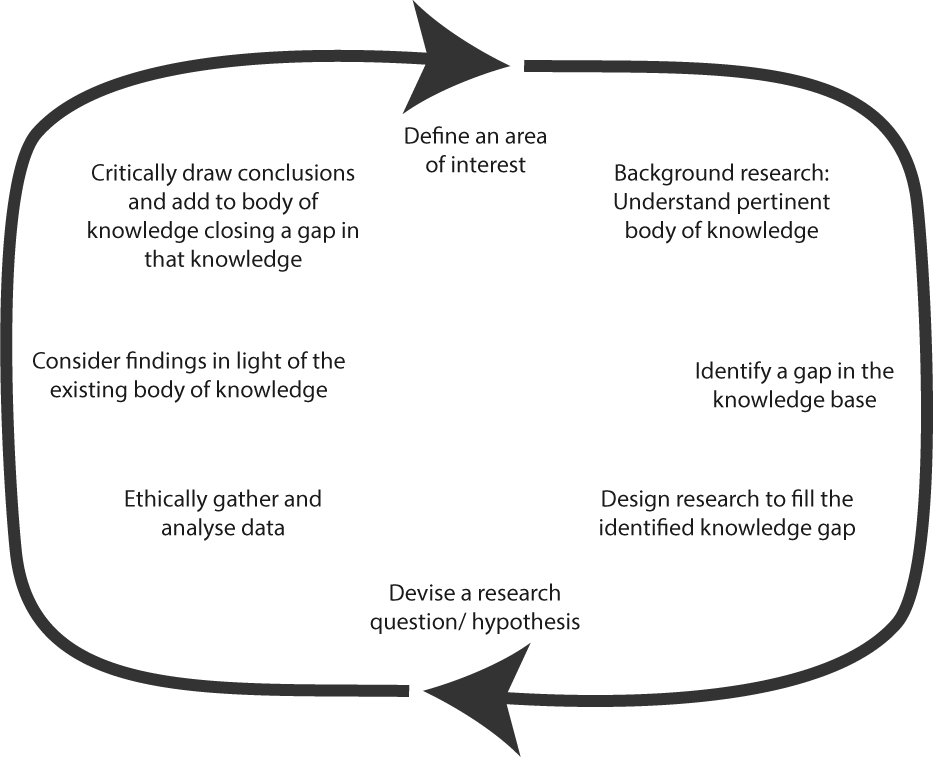Gaps in knowledge are identified in the literature
The research cycle, then, is about understanding what is already known, identifying a knowledge gap and then designing a piece of research that can produce findings that will fill that gap. Researchers will then report their findings, usually by publicising them in a peer reviewed journal. At this point, the findings will become part of the body of knowledge. An important part of the report of findings will be a critical analysis of the existing knowledge base and the research that has been reported. In other words, the researchers will need to be critical of their own work and identify any shortcoming s (and strengths) associated with their work. Beyond this, the researchers should note any gaps in knowledge that have not been filled by their research. This in effect is where they ask more questions or call for more research to be done in that particular area.
Of course, the vast majority of research findings will make a small incremental advance in knowledge but occasionally, findings of significant or profound importance are made that the body of knowledge either in relation to the topic or field, that a seismic shift in understanding is required. This is often a controversial process and has been known by the term coined by Kuhn (2012); “paradigm shift”.
The research cycle can be illustrated thus:

This is a relatively simple illustration that does not detail every aspect of the process. For example, the phase for designing a research question or hypothesis will be informed by the researcher’s philosophical stance, or view of the world and the nature of reality. A reality out in the world that exists apart from humans is different from the reality of the experience of existence of humans.
In this sense, one can view reality as an objective form existing apart from human experience yet we can argue that only the experience of reality actually matters. This can become a very complex field of philosophy and is not something that can be examined in any great detail here.





